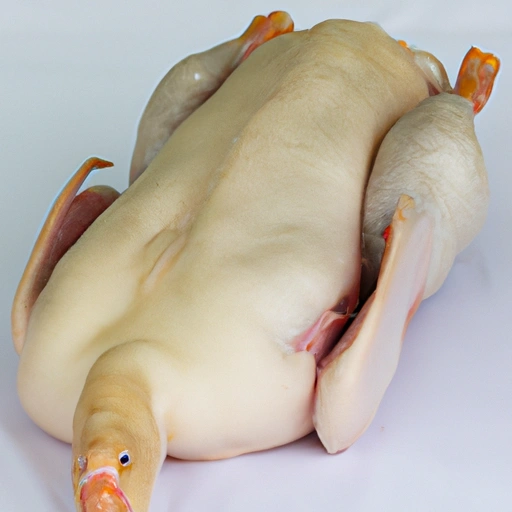Goose
Description

Goose is a large bird from the family Anatidae, which also includes ducks and swans. It has been a traditional food source in many cultures across Europe, Asia, and North America. Renowned for its rich, flavorful meat, goose is often considered a delicacy and is especially popular during holiday seasons. Goose meat has a higher fat content compared to other poultry, which contributes to its unique taste and texture when cooked.
Common uses
Goose is commonly used in a variety of dishes, ranging from roasted whole goose to preserved products like goose liver pâté. Its eggs are also prized for their rich flavor and larger size compared to chicken eggs. Goose fat is highly valued in cooking for its ability to impart a deep, savory flavor and is often used to roast potatoes and vegetables.
Nutritional value
Calories
Goose meat contains approximately 305 calories per 100 grams (3.5 oz).
Protein
It provides about 24 grams of protein per 100 grams (3.5 oz).
Fat
The fat content is around 22 grams per 100 grams (3.5 oz), of which a significant portion is unsaturated fat.
Carbohydrates
Goose meat is essentially carbohydrate-free.
Vitamins
It is a source of B-vitamins, particularly vitamin B6 and B12 essential for energy metabolism and blood formation.
Minerals
Goose meat contains minerals like iron, phosphorus, and zinc, which are vital for maintaining healthy bodily functions.
Health benefits
Goose meat is rich in protein and essential minerals, which are important for muscle development and maintaining a healthy immune system. The presence of B-vitamins aids in energy production and the maintenance of neurological health. Despite its high-fat content, the unsaturated fats can contribute to a healthy lipid profile when consumed in moderation.
Potential risks
Due to its high-fat content, excessive consumption of goose meat may lead to an increased risk of developing heart disease. People with cholesterol issues should consume goose in moderation. It's also important to ensure the goose meat is properly cooked to avoid the risk of foodborne illnesses.
Common recipes
Popular recipes include roast goose, goose confit, and goose liver pâté. In German cuisine, goose is traditionally served with red cabbage and dumplings, while in France, foie gras (made from goose liver) is a gourmet delicacy.
Cooking methods
Goose can be oven-roasted, braised, grilled, or slow-cooked to bring out its flavors. The meat is known for its succulence when cooked properly, with the fat rendering out and basting the meat.
Pairing with other ingredients
Goose pairs well with hearty sides like root vegetables, sauerkraut, and dark fruit sauces such as plum or cherry. Its rich flavor also complements acidic components like orange or apple-based condiments.
Summary
Goose meat is a flavorsome ingredient with deep-rooted historical significance and a variety of culinary applications. It is nutritionally dense and provides several health benefits but should be consumed in moderation due to its high-fat content. Goose's rich taste and versatility make it a prized component in many traditional and festive dishes around the world.